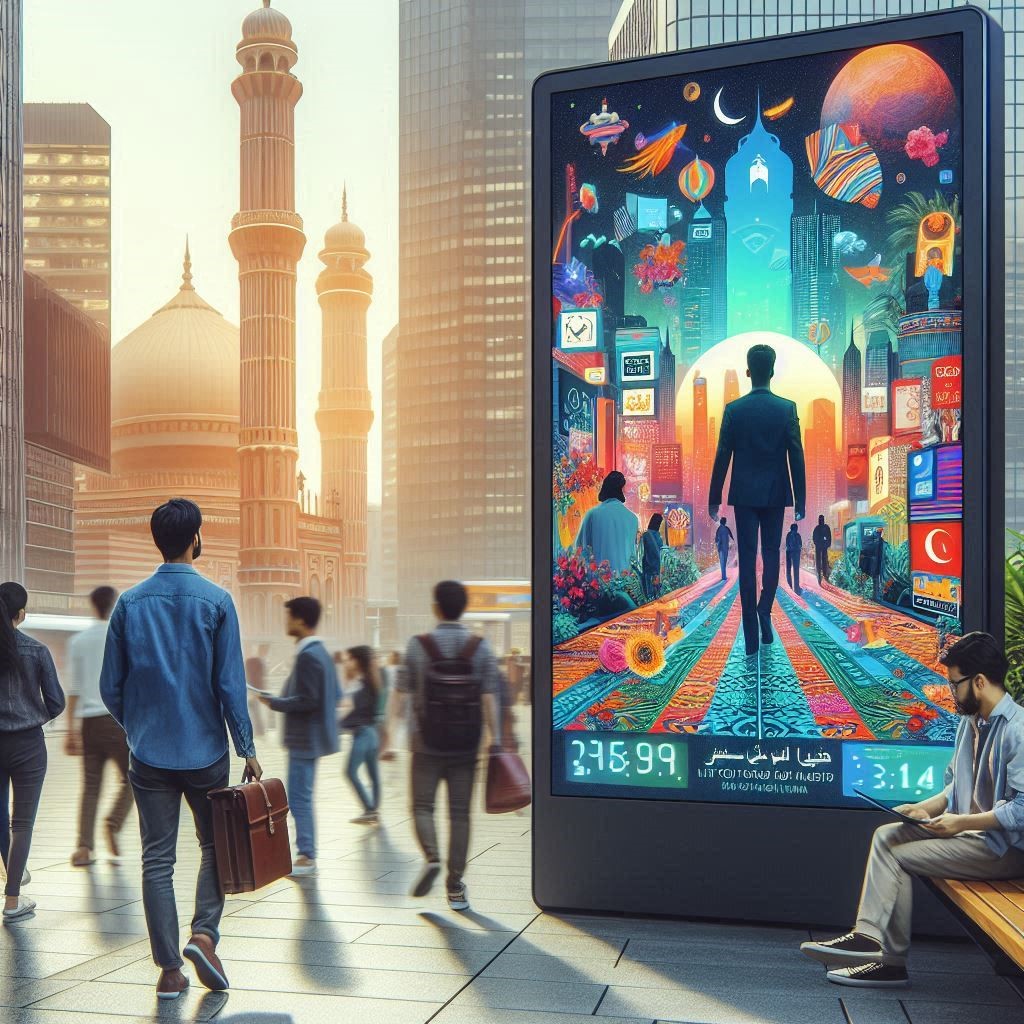Digital signage has transformed the way information is communicated and displayed across various sectors. Utilizing screens, projectors, and other digital display technologies, businesses can convey messages in real-time, engage audiences more effectively, and enhance overall user experience. This article explores the diverse applications of digital signage across multiple industries, highlighting its impact and benefits.
Digital signage Industry Outlook
The global digital signage industry is projected to grow from USD 20.1 Billion in 2024 to USD 27.3 billion by 2029, registering a CAGR of 6.3% during the forecast period. The growth of the market can be attributed to the increasing adoption of digital signage in commercial applications such as retail & hospitality, surging demand for high resolution displays such as 4K & 8K displays, rising infrastructural developments in developing countries, and ongoing technological advancements in display sector.
Applications of Digital Signage Industry
1. Retail Industry
In the retail sector, digital signage has become a crucial tool for enhancing customer engagement and driving sales:
Promotions and Advertisements: Retailers use digital screens to showcase promotions, sales, and advertisements. Dynamic content can be updated easily, allowing for timely marketing campaigns that attract customers.
Interactive Displays: Touchscreen kiosks provide customers with interactive experiences, enabling them to browse product information, check inventory, and access personalized recommendations.
In-Store Navigation: Digital signage helps customers navigate large stores, guiding them to specific departments or products and enhancing the shopping experience.
2. Hospitality Industry
The hospitality industry leverages digital signage to improve guest experiences and streamline operations:
Wayfinding Solutions: Digital directories and wayfinding screens help guests locate amenities, conference rooms, and other facilities within hotels and resorts, reducing confusion and enhancing satisfaction.
Event Promotion: Digital signage in lobbies and common areas can promote upcoming events, activities, and dining options, keeping guests informed and engaged during their stay.
Dynamic Menu Boards: Restaurants utilize digital menu boards to display menus, prices, and special offers. These boards can be easily updated to reflect real-time changes, such as daily specials or item availability.
Download PDF Brochure @ https://www.marketsandmarkets.com/pdfdownloadNew.asp?id=513

3. Transportation and Logistics
Digital signage plays a critical role in the transportation and logistics industry by improving communication and operational efficiency:
Information Displays: Airports, train stations, and bus terminals use digital signage market to provide real-time updates on arrivals, departures, and delays, keeping travelers informed and reducing anxiety.
Safety and Compliance Messaging: In warehouses and distribution centers, digital signage can display important safety information, compliance reminders, and operational updates to ensure a safe working environment.
Fleet Management: Logistics companies use digital screens in vehicles to provide drivers with route information, delivery updates, and real-time communication, improving overall efficiency.
4. Education Sector
In educational institutions, trends in digital signage industry enhances communication and engagement among students and staff:
Announcements and Events: Schools and universities use digital signage to display important announcements, event schedules, and news updates, ensuring that the community is well-informed.
Interactive Learning: Digital displays in classrooms can enhance learning experiences through interactive lessons, multimedia presentations, and real-time quizzes.
Campus Navigation: Digital wayfinding solutions help new students and visitors navigate large campuses, directing them to classrooms, offices, and facilities.
5. Healthcare Industry
Digital signage in healthcare settings improves patient experiences and communication:
Patient Information: Hospitals and clinics use digital displays to provide patients with information about wait times, appointment details, and health services, reducing anxiety and confusion.
Health Education: Digital signage can promote health awareness campaigns, display educational content about medical conditions, and provide preventive health tips in waiting areas.
Staff Communication: Digital signage solutions facilitate internal communication among staff, displaying important updates, schedules, and emergency alerts.
6. Corporate Sector
In the corporate world, digital signage enhances internal communication and engagement:
Employee Communication: Companies use digital displays to share important news, updates, and announcements with employees in common areas, improving transparency and engagement.
Performance Metrics: future of Digital signage can display real-time performance metrics, goals, and achievements, motivating employees and fostering a competitive spirit.
Training and Development: Interactive displays in training rooms can enhance learning experiences by providing access to multimedia resources and real-time feedback.
7. Events and Trade Shows
Digital signage is essential for enhancing the attendee experience at events and trade shows:
Event Schedules: Digital displays can provide attendees with real-time information about event schedules, speaker bios, and session locations, helping them navigate the event effectively.
Brand Engagement: Companies can use digital signage to showcase their products, services, and branding through eye-catching visuals, videos, and interactive experiences.
Feedback Collection: Digital kiosks can facilitate real-time feedback collection from attendees, helping organizers gauge satisfaction and improve future events.
The applications of digital signage are vast and varied, enhancing communication, engagement, and efficiency across multiple industries. As technology continues to advance, digital signage will evolve, offering even more innovative solutions to meet the needs of businesses and their audiences. By leveraging the power of digital displays, organizations can create impactful experiences that drive engagement, improve customer satisfaction, and ultimately contribute to their success in an increasingly competitive landscape.
